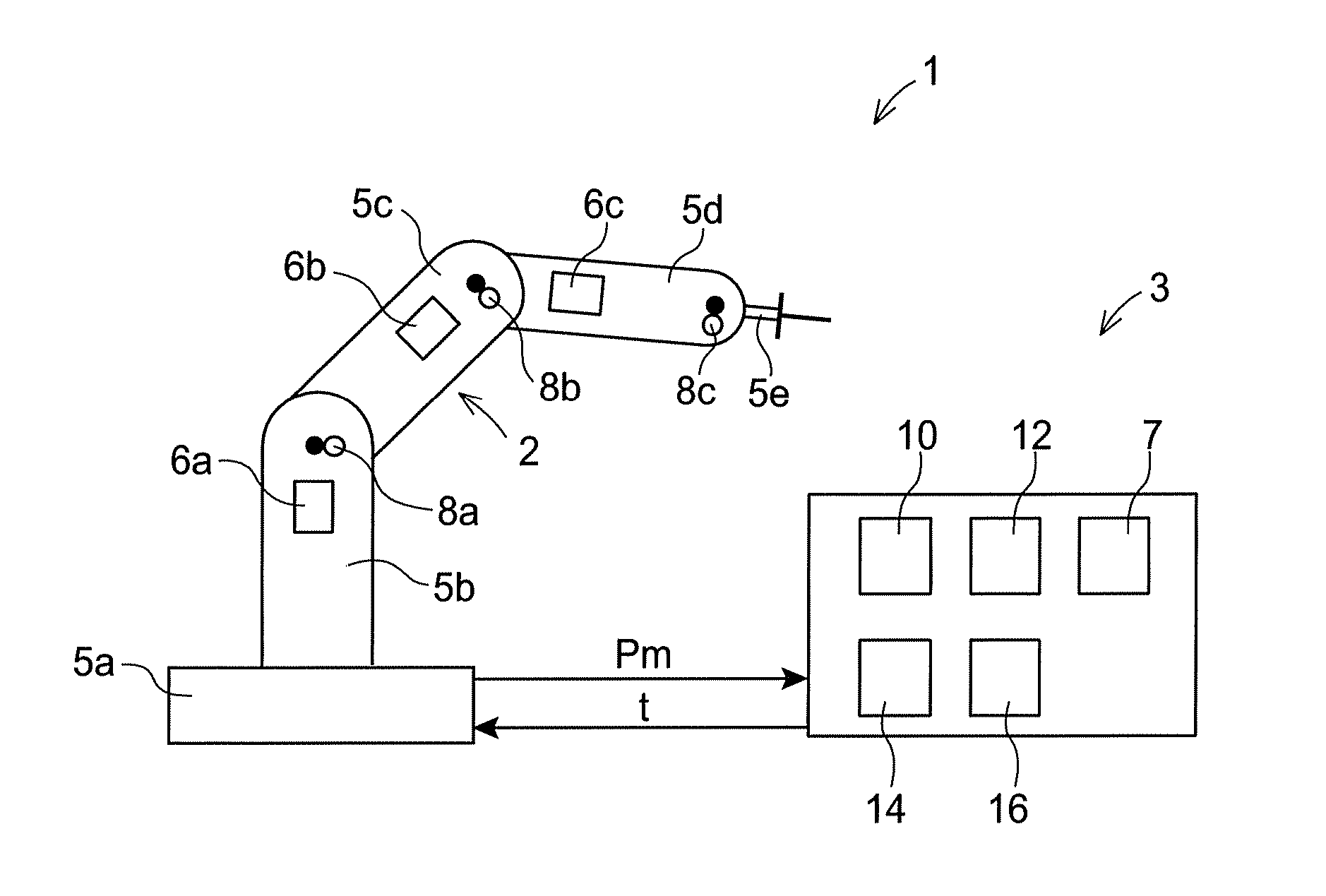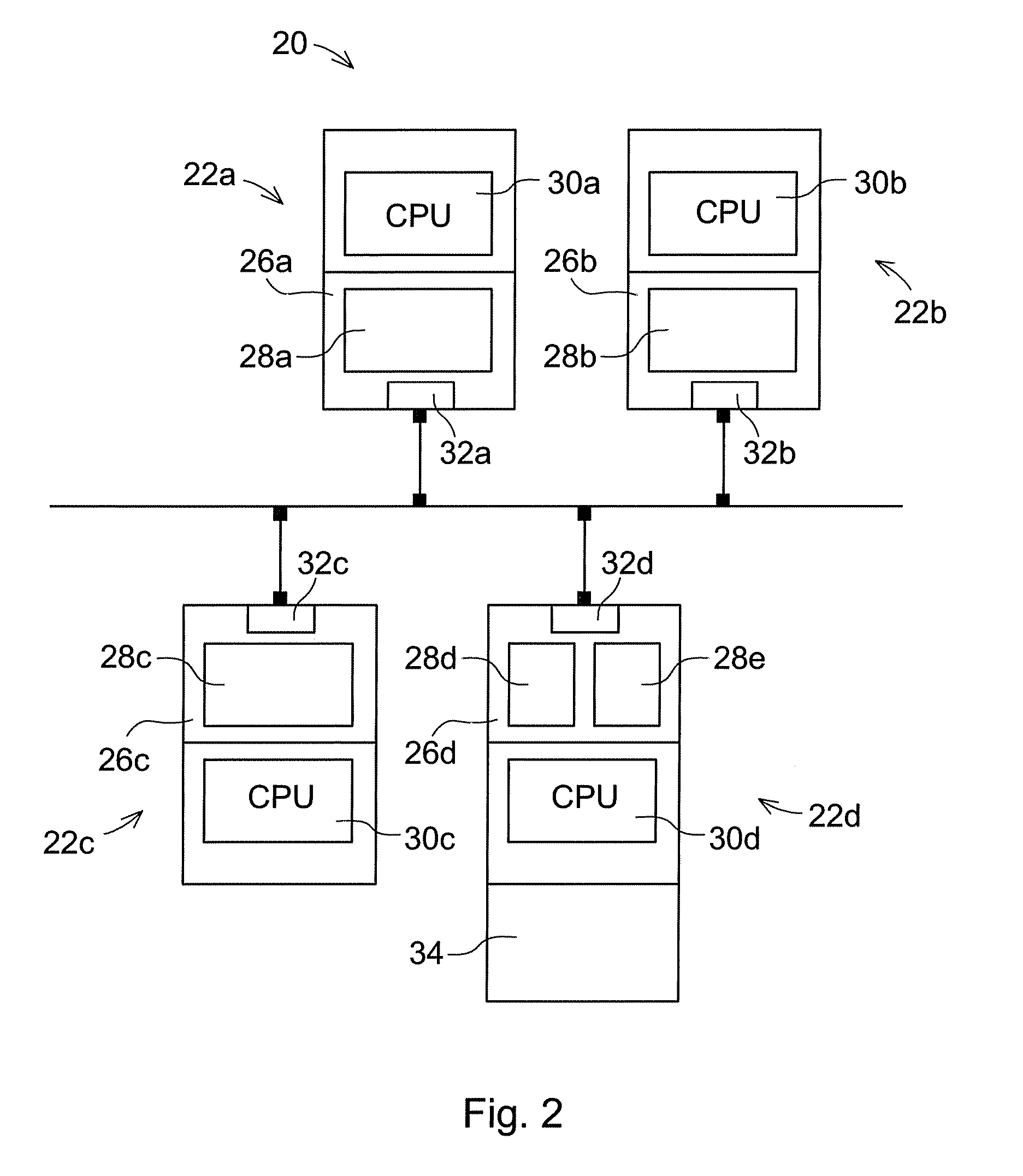Control system for controlling an industrial robot
a control system and industrial robot technology, applied in the field of control systems, can solve the problems of difficult to add a new function or replace some parts of the control system, the available hardware is rarely used in an optimal manner, and it is difficult to achieve the effect of increasing the capacity of the hardware unit, high priority, and high performance of selected system functions
- Summary
- Abstract
- Description
- Claims
- Application Information
AI Technical Summary
Benefits of technology
Problems solved by technology
Method used
Image
Examples
Embodiment Construction
[0024]FIG. 1 shows a conventional industrial robot 1 comprising a manipulator 2 and a control system 3. The industrial robot 1 has a plurality of robot parts rotatably movable relative to each other. The robot parts are in this case a stand 5a, robot arms 5b-d, and a tool holder 5e. The industrial robot comprises a plurality of actuators 6a-c for controlling the position and speed of the robot parts. The actuators are connected to a servo control unit 7 for generating control signals to the motor and located in the control system 3. The manipulator is also provided with sensors 8a-c detecting the position of the robot parts. Signals comprising measured data Pm from the sensors 8a-c are transmitted to the control system 3. The measured data comprises, for instance, angular position, velocity, and acceleration.
[0025]The control system 3 comprises a main computer unit 10, a memory unit 12 for storing control programs including movement instructions for the robot, a program executor uni...
PUM
 Login to View More
Login to View More Abstract
Description
Claims
Application Information
 Login to View More
Login to View More - R&D
- Intellectual Property
- Life Sciences
- Materials
- Tech Scout
- Unparalleled Data Quality
- Higher Quality Content
- 60% Fewer Hallucinations
Browse by: Latest US Patents, China's latest patents, Technical Efficacy Thesaurus, Application Domain, Technology Topic, Popular Technical Reports.
© 2025 PatSnap. All rights reserved.Legal|Privacy policy|Modern Slavery Act Transparency Statement|Sitemap|About US| Contact US: help@patsnap.com



